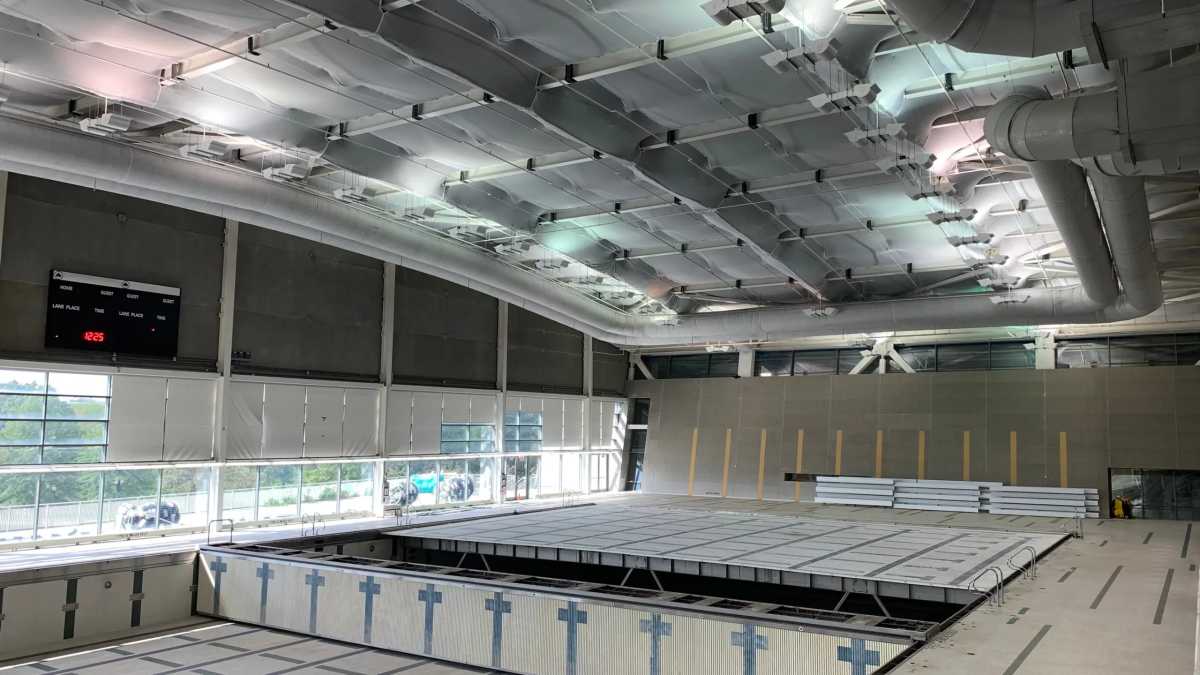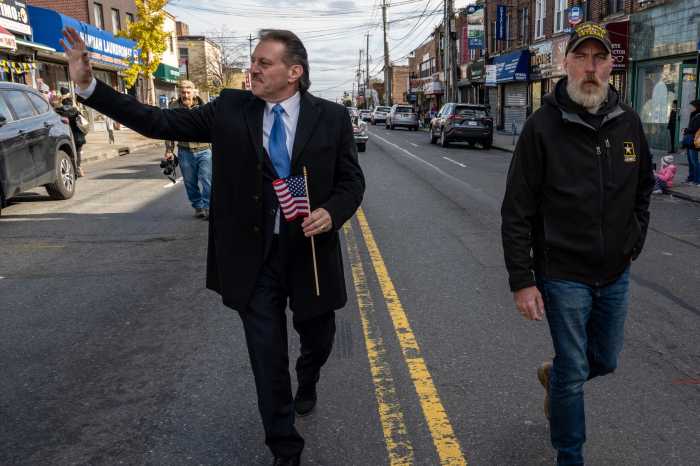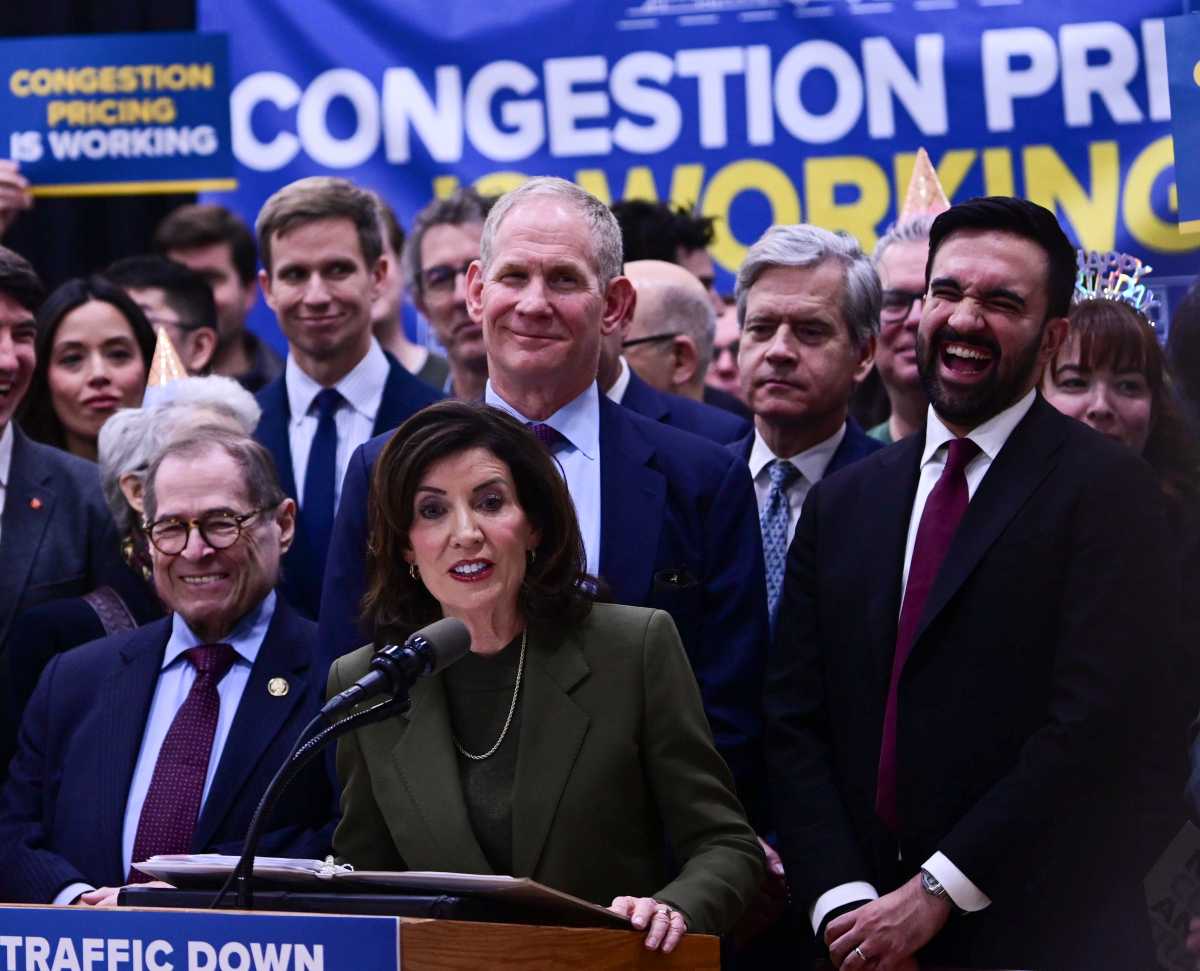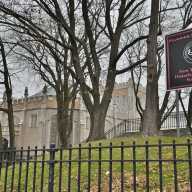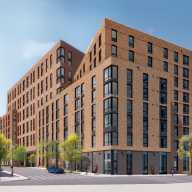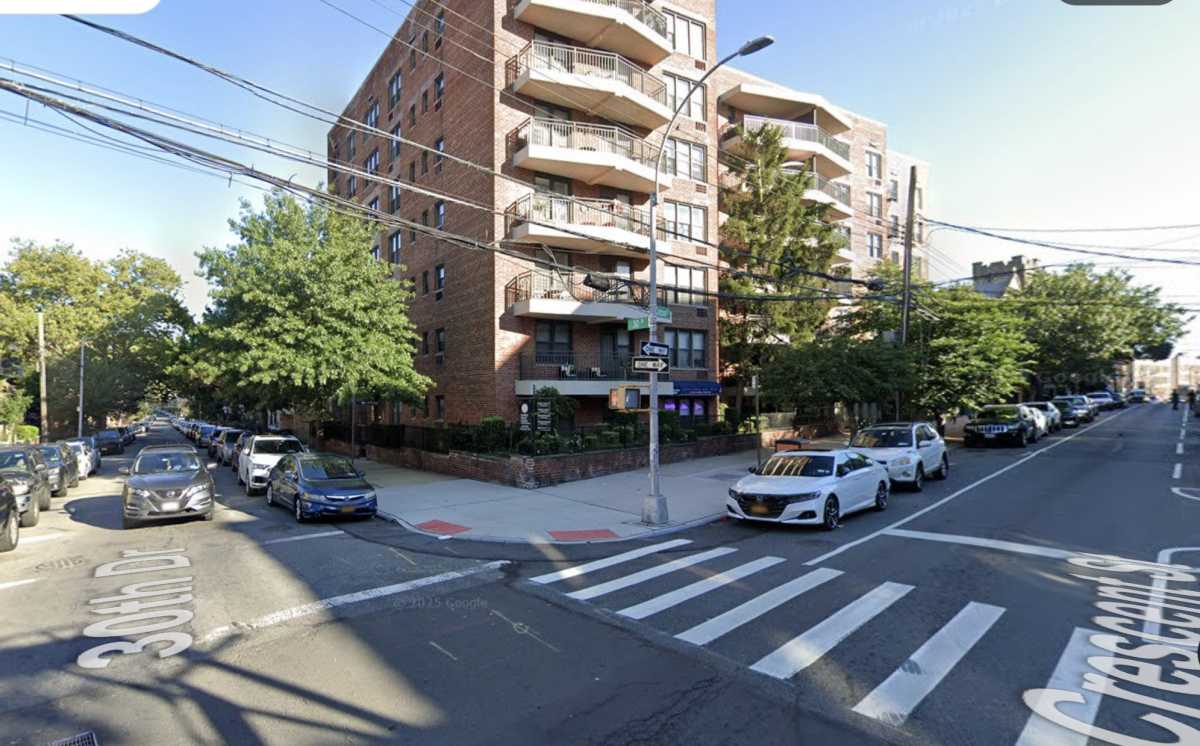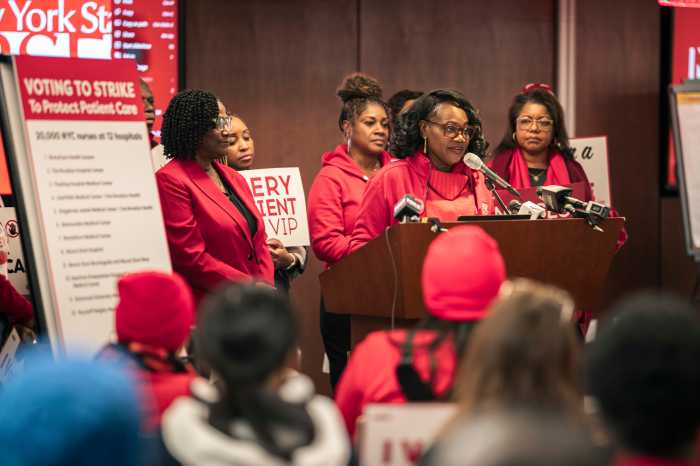This article was originally published on by THE CITY. Sign up here to get the latest stories from THE CITY delivered to you each morning.
A heralded Queens public pool central to New York City’s failed 2012 Olympic bid has been shuttered since before the pandemic — while as many as a dozen workers show up daily without swimmers to serve.
It’s one of six public indoor pools closed for maintenance even after the six others run by the city reopened last month following an 18-month COVID-spurred shutdown.
The Flushing Meadows Corona Park Aquatic Center was shuttered Jan. 13, 2020, for what the Department of Parks and Recreation described as “emergency repairs” after the roof started shedding concrete.
At the time, the department said in a press release, “the pool will be closed to the public for at least six weeks,” with “extensive ceiling netting” to be installed over the pool and a neighboring ice rink.
The pool’s public entrance on the eastern edge of the park is now padlocked, with handwritten signs reading “Pool is closed, sorry” pasted on the front doors.
That netting is now permanently in place over the drained 50-meter pool, according to workers at the facility, which first opened its doors in 2008. Chunks of concrete falling from the ceiling are to blame, the Parks Department says.
Conditions are so far-gone that Parks says it is developing plans to reconstruct the roof.
The extended shutdown marks a deep plunge from the lofty ambitions of the $67 million rec center’s creators, who included former mayors Rudy Giuliani and Mike Bloomberg, who championed bringing the Olympics to New York.
Bloomberg delivered his 2008 State of the City address from the Aquatic Center’s ice rink, which adjoins the pool.
Its architects delivered a distinctive wave-like roof held up by cables connected to a mast that slices into the sky, like a ship’s.
 New York City Department of Parks and Recreataion
New York City Department of Parks and Recreataion
A steel industry magazine in 2007 touted the cable-stay roof as “highly efficient,” protecting the pool’s supporting structure from the corrosive effects of chlorine as well as allowing walls to expand to accommodate spectator seating.
“No one wants a white elephant, built for the Olympics but useless after that,” said a rep from the project’s Geiger Engineers at the time.
‘A Waste of Taxpayer Dollars’
Today, when it rains the building leaks in the lobby and pool area, according to Joe Puleo, president of DC 37’s Local 983, the union representing some workers at the facility.
“Basically it’s a waste of taxpayer dollars,” Puleo said.
Images obtained by THE CITY show water stains spreading on the walls of the main pool room, also seeping into concrete floors around the bleachers. Lockers appear broken, while toilet fixtures are sealed with duct tape.
The concrete over the pool is “spalling” — flaking into pieces — potentially because of variations in humidity and temperature or improper placement of concrete, Parks Department officials acknowledge.
“This is major structural work that needs to be done, netting is like putting a Band-Aid on it,” Puleo said. “At this rate it looks like the building will be condemned.”
Meanwhile, the drained pool remains staffed with about a dozen security and recreational employees who show up to work daily at an empty, locked facility with no visitors to attend to, sources told THE CITY.
 Obtained by THE CITY
Obtained by THE CITYSwimmers who relied on the facility feel the ripples. One staffer told THE CITY that the pool’s regulars still sometimes show, on the chance that it may have reopened — including a man in his nineties who used to swim daily and occasionally sits in the parking lot, waiting.
‘I Miss It’
Augusto Behrens, who’s 60, lives in Flushing and swam in the aquatic center twice a week, told THE CITY he’s been mulling the significance of the loss for the pool’s community, from little children learning to swim to seniors seeking low-impact exercise.
“I’m still having a lot of pain in my joints, things that the swimming pool was able to fix,” Behrens said. “I miss it.”
Councilmember Peter Koo (D-Queens), who represents neighboring Flushing and chairs the City Council’s Parks Committee, called the aquatic center “one of Queens’ most cherished swimming pools that has been sorely missed during the pandemic.”
He added: “Parks needs to expedite repairs and make sure it can reopen in a safe and timely manner so that the thousands of swimmers who enjoy this facility can get back in the pool.”
Assemblymember Catalina Cruz (D-Queens), whose district includes Corona, said that the facility fix “should be a priority for the city to complete.”
“While the delay in construction has not been explained, our community awaits a much needed resource,” she added.
Meghan Lalor, a Parks spokesperson, detailed remaining work to THE CITY, which includes replacing light bulbs and air duct supports, performing maintenance, and cleaning and refilling the pool. “This is work that can only be done while the pool is closed,” she said.
A facility staffer who spoke to THE CITY on condition of anonymity expressed skepticism on the construction timeline, saying: “There’s no work happening right now.”
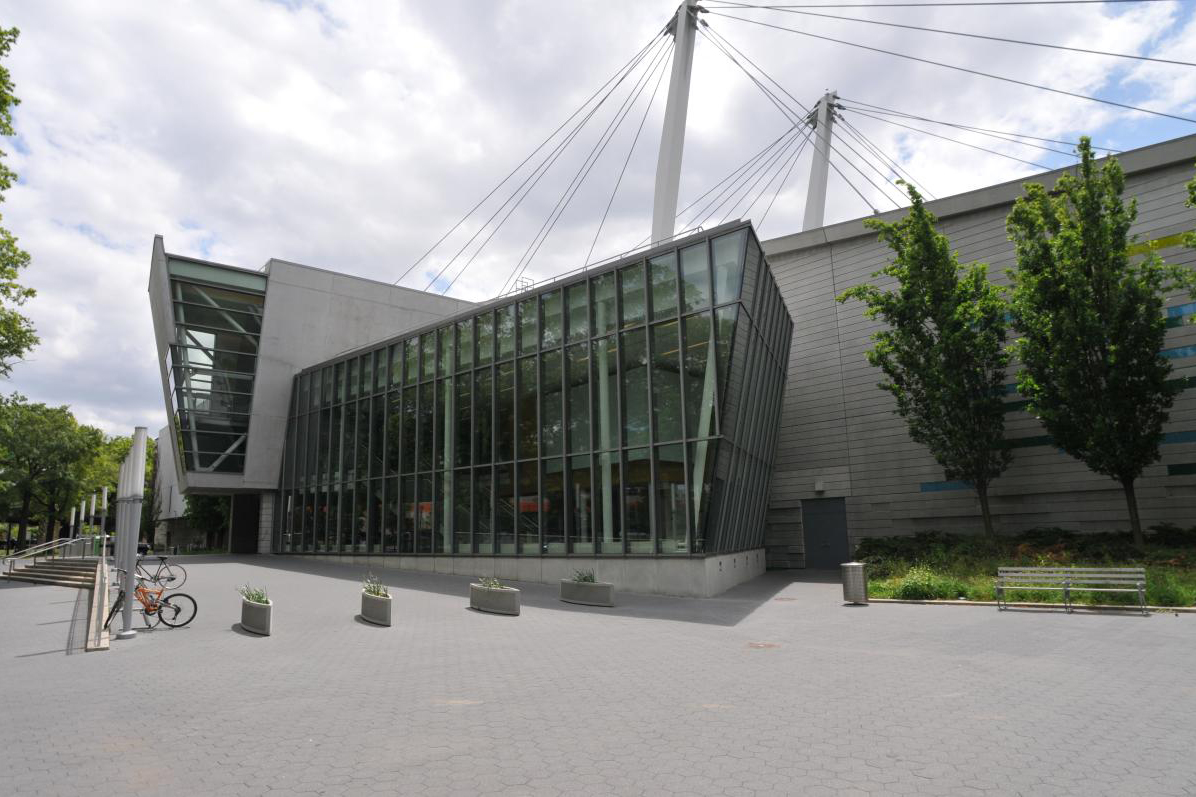 New York City Department of Parks and Recreation
New York City Department of Parks and Recreation
The privately managed ice rink reopened in October 2020 with the netting above it, after its own contractors stepped in according to Parks.
On Hold in Harlem
Flushing is just one of six Parks-run pools closed for repairs — most since before all rec centers shut down in March 2020.
In Harlem, the pool at the Hansborough Recreation Center on West 134th Street has been shuttered since May 2019. The $10 million-plus project to “reconstruct the pool, entrance and interior spaces” remains in the design phase, according to Parks’ online construction tracker, which had projected the work to take one year starting March 2020.
Delinrance Pierrepaul, 58, took advantage of the free one-year membership Parks announced when it reopened centers last month — only to find that the pool was not available.
“I can’t believe that it’s still closed,” she told THE CITY before going inside Hansborough for a workout Wednesday. “It’s a shame because it’s a really nice facility. They told me I should go to the YMCA or to another rec center to use a pool, but I don’t want to travel further or pay the membership at the YMCA.”
 Clifford Michel/THE CITY
Clifford Michel/THE CITYIndoor pools are also closed for repairs at the Constance Baker Motley Recreation Center in midtown Manhattan, where Parks says it’s installing nets to protect against falling ceiling tiles, and Brownsville Recreation Center in Brooklyn, which awaits a filter plant fix.
The entire Tony Dapolito Recreation Center in the West Village shuttered this summer — due to “structural issues” found during an ongoing construction project on the center’s exterior, Parks officials said — after briefly reopening during outdoor swim season.
And St. Mary’s Recreation Center in Mott Haven, The Bronx, had to be shut down after its boiler got wrecked in the Sept. 1 deluge that followed Hurricane Ida, according to Parks.
Parks officials did not provide any timeline for reopening those pools.
“We know that indoor pool options are limited, and our low cost facilities provide — for many New Yorkers — their only reasonable access to swimming during the winter months,” Lalor said. “That’s why we never like to close facilities, however, these essential repairs must be done to ensure everyone’s safety.”
She noted that the pools aside from Flushing “all range between 70 and 110 years old.”
‘Aquatic Desert’
Shawn Slevin, the founder of water education nonprofit Swim Strong, called the city an “aquatic desert” lacking enough pools for its 8.8 million residents.
She said the Flushing Meadows Corona Park pool is unique because of its “multifunction, multiuse” design that allows simultaneous activities in different sections.
The depth of one part on the pool’s shallow end could be adjusted, making it an ideal environment for those learning to swim, she noted.
“We are a city surrounded by water, water running through us, and yet we are not a city with high aquatic skills,” Slevin. “More of our population doesn’t have them than has them.”
She added that when it comes to repairing pools, the Parks Department seems to move at a glacial pace.
“You can take a building, a skyscraper down in Manhattan and build a bigger one in its place faster than you can get some of these pools back online. Something’s wrong with that picture,” said Slevin, of Woodside. “Why is that? It’s not like we have loads of them so we can go elsewhere.”
Only one other indoor city pool is currently open in Queens, at Roy Wilkins Recreation Center in St. Albans. Traveling there from Corona could take more than an hour on public transportation, with multiple transfers.
“If this was another neighborhood it would have been an uproar already,” Puleo said.
“Who suffers from this? The people it was intended for.”
THE CITY is an independent, nonprofit news outlet dedicated to hard-hitting reporting that serves the people of New York.

